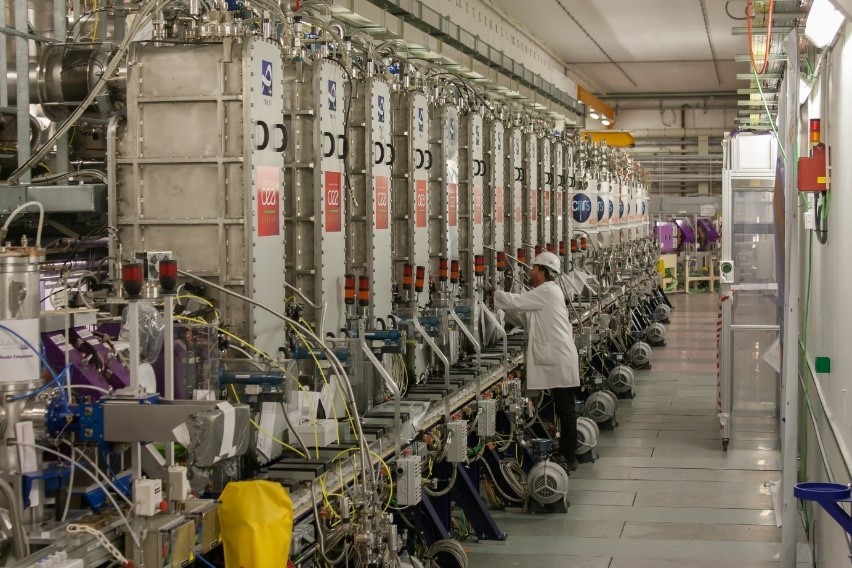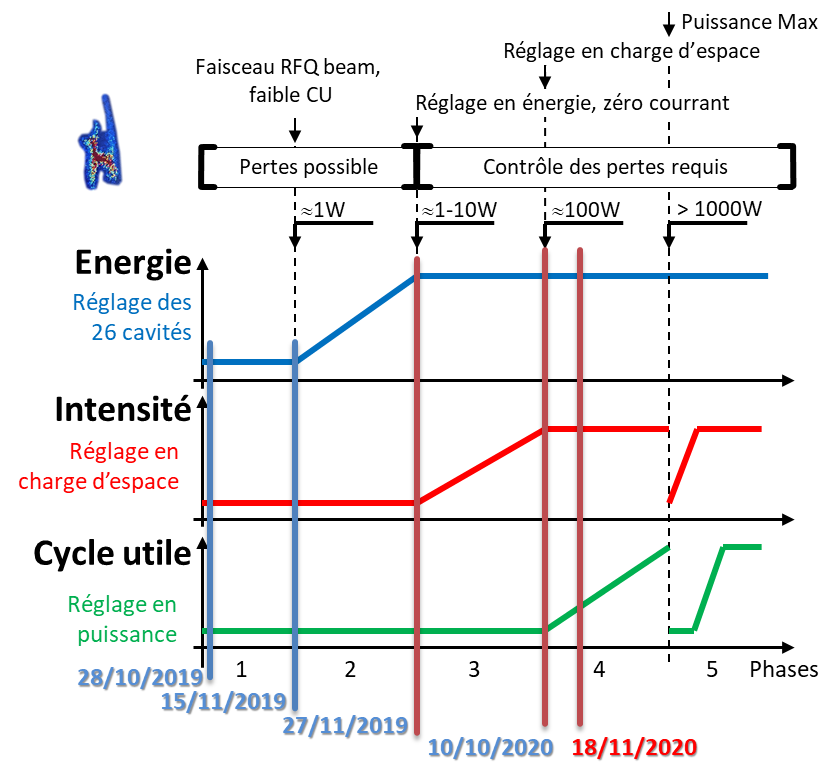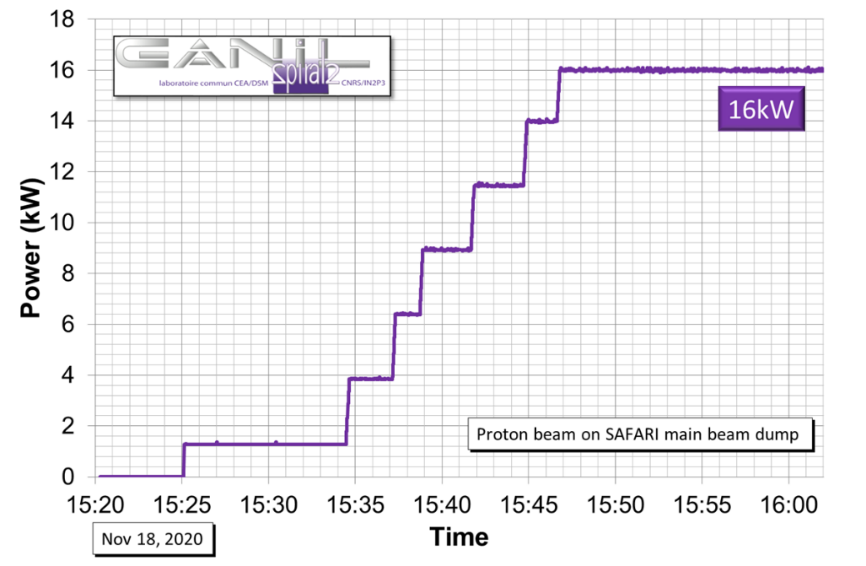
Figure 1: View of the SPIRAL2 linear accelerator with the first twelve cryomodules designed by CEA/IRFU and integrated and tested at DACM, and the last seven designed by CNRS. P.Stroppa/CEA
GANIL is commissioning its new superconducting linear accelerator (LINAC - Figure 1). This high-power accelerator provides GANIL with new possibilities in terms of beams for nuclear physics research. By providing beams with an intensity of up to 5 mA (3x1016 particles per second), the new SPIRAL2 (2nd generation on-line radioactive ion production system) LINAC will enable the GANIL's various scientific and technical programs to cross new frontiers.
A 16 kW proton beam was delivered by SPIRAL2's LINAC at the end of November 2020. This represents 10% of the machine's maximum proton power and marks an important milestone for the project. The ramp-up was done progressively, according to a 4-phase plan to control risks and validate the beam accelerator (Figure 2). The first two phases were carried out in 2019 with a very low intensity beam, in order not to damage the machine in case of loss of particles (see milestone).
Since the return to activity at the exit of the first shutdown in 2020, great efforts have been made by the teams in order to start a gradual increase in beam current up to its nominal peak intensity. Numerous machine studies have made it possible to resolve one by one the various difficulties inherent in the operation of a machine of such power. On October 10, 2020, a 4.8 mA beam was accelerated, representing the end of phase 3 of the ramp-up in compliance with the operating rules of an INB (basic nuclear installation). It demonstrates the control of the full beam intensity.
On November 18, a beam with a power of 16 kW was accelerated to the accelerator's main beam stop (Figure 3). It demonstrates the control of the extremely low beam loss level of less than ten watts throughout the machine. This loss control was made possible thanks to a very good understanding of the physics of acceleration, the result of numerous simulations and error calculations, and by the optimization of several advanced techniques such as the adjustment of the RF wave injection servo-controls during the beam passage or the use of advanced functions such as the "feedforward" of the cavities, developed by the DIS within the LLRF (Low Level Radio Frequency) control electronics that this laboratory has developed. It should be noted that during all these phases, the GANIL has been able to rely on the RF (Radio Frequency) expertise of the DACM in particular during cavity conditioning as well as on active support in beam optics in particular concerning the improvement of the theoretical model of the machine based on the DACM simulation tools.
This latest milestone validates the very good performance of the accelerator and makes it possible to calmly envisage the final power ramp-up to the nominal value of 200 kW, which will be obtained by accelerating a 5 mA deuterium beam. This objective begins now with the adjustment of helium beams to prepare the deuterium beams that will be produced in 2021. Physicists will begin operating the LINAC beams in the fall of 2021.
Contacts: Didier Uriot (IRFU), Robin Ferdinand (GANIL)
• Accelerator physics and technology
• Accelerators, Cryogenics and Magnetism Division (DACM) • GANIL • The Systems Engineering Division





